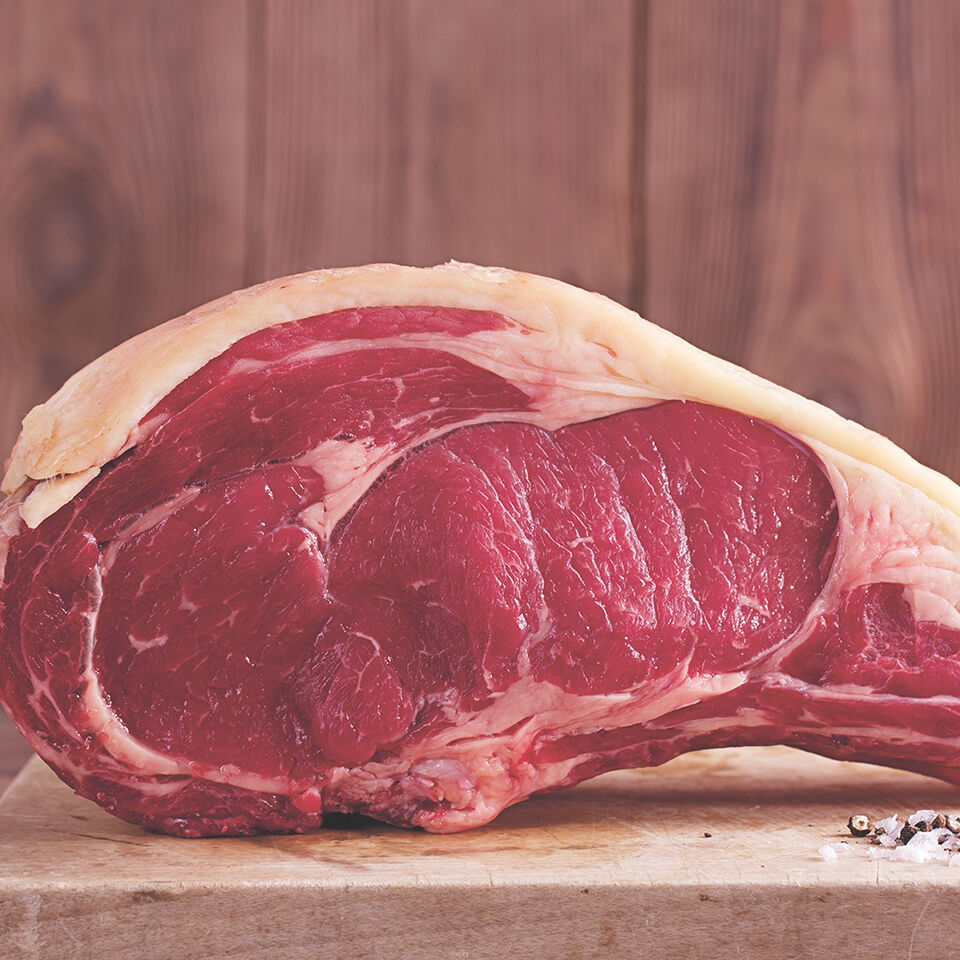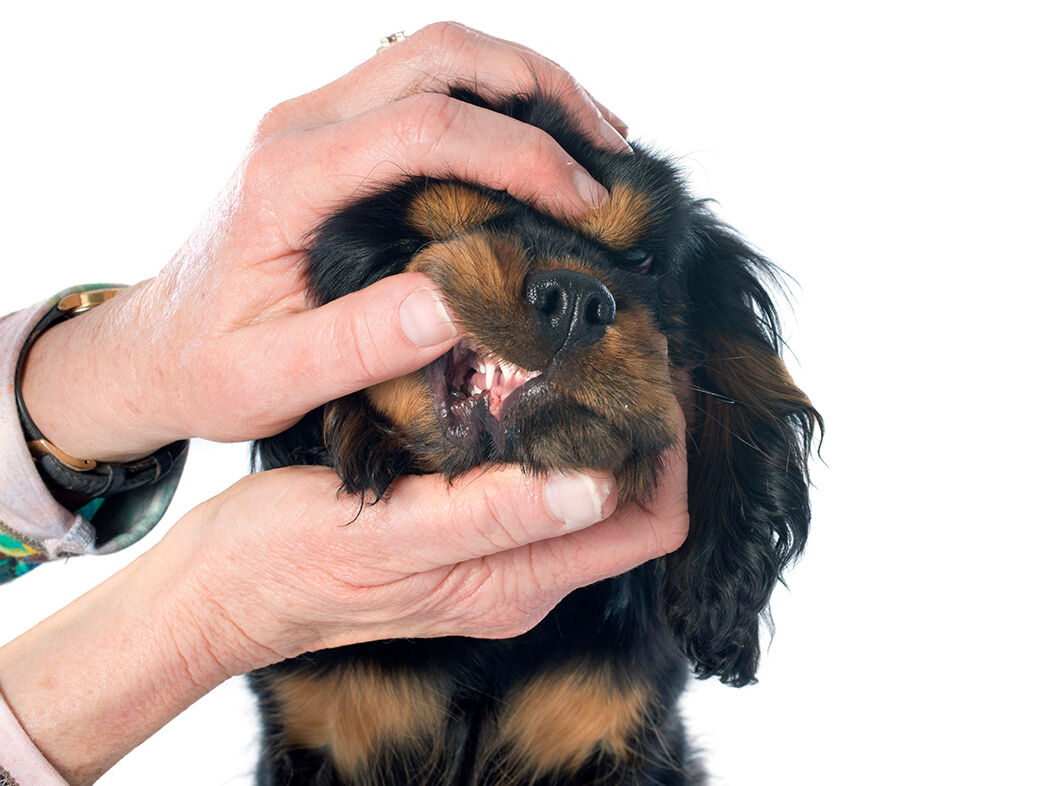The closer you look at the topic of healthy dog nutrition, the more often you will probably encounter different and sometimes contradictory opinions, often including nutritional errors. We will take you through the minefield of pet nutrition and reveal the most common mistakes.

Myth No. 1: 'Dogs need mainly meat because they are descended from wolves.'
It is true that today’s domestic dogs are descended from wolves, and that wolves mainly eat meat. It is also true that dogs need meat for a species-appropriate diet – but feeding your dog only meat is not species-appropriate and is one of the most common mistakes. Domestic dogs have adapted to different feeding habits over thousands of years of living together with humans, and this is evident in the fact that, for example, dogs can metabolise carbohydrates much better than the wolf. Everyday life for your dog is also very different from that of a wolf – your dog doesn’t have to hunt its own prey, and undertakes far less physical activity than its wild ancestors. It therefore needs significantly less protein, fat and energy. So your dog food should contain meat, but a diet which is too rich in meat may pose health risks for the kidneys and liver. It is also a matter of achieving the right combination of protein, carbohydrates, fat, fibre, minerals and vitamins.
Myth No. 2: ‘Grain is a cheap filler in food and triggers allergies.’
Grain often gets bad press when it comes to nutrition. Some people claim grain has properties that trigger allergies, while others think it has a negative effect on conditions such as diabetes or arthritis. But in fact there is no scientific evidence for these claims. Furthermore, only 5 per cent of allergies are attributed to food ingredients. Grains are an important source of nutrients – in addition to carbohydrates as an energy source, they also contain protein, fibre and important trace elements and vitamins. Fibre forms the basis for optimal functioning of the intestines and healthy intestinal flora.
Myth No. 3: ‘High meat content in the food means high quality.’
High meat content is as yet not a quality criterion for good dog food. For one thing, there are special formulations, such as renal diets or food for senior pets, which do not have high protein levels with good reason. Secondly, the terms ‘meat’ and ‘meat content’ are not clearly defined. Each manufacturer can interpret these differently. While we may understand meat to mean flesh, or muscle meat, a butcher deems ‘meat’ to be every part of the slaughtered animal which is suitable for human consumption, i.e. rind, bacon fat, soup bones, oxtail, and organs such as the tongue, heart or liver. In dog nutritional terms, it makes sense to use not just the muscle meat, but also other elements – after all, wolves eat almost every part of their prey, so pure muscle meat is only a small part of their diet. There is also an important difference as to whether the stated meat content refers to fresh or dried ingredients (listed as ‘lamb’ or ‘lamb, dried’, for example). Fresh ingredients contain high levels of water, and the meat content can therefore seem higher at first glance. Specifying the ‘proportion of animal protein in total protein’ would be the ideal way to achieve a direct comparison of different products. This is often used and stated by manufacturers as a quality standard. The stated crude protein content includes plant protein as well as animal protein.
Myth No. 4: ‘BARF is healthier for dogs’
There is no scientific evidence that BARF (Bones And Raw Food or Biologically Appropriate Raw Food) is healthier in general terms for dogs. As with any diet, not all dogs can tolerate a raw food diet. Also, not every dog likes to eat their food raw. There is also the risk of overburdening the kidneys and liver if the diet contains too much protein. In fact, research has shown that 9 out of 10 home-prepared BARF rations have varying degrees of nutritional deficiencies. Your dog can only get the nutrients it needs (adjusted according to age, breed, gender, etc), if the ratio of meat, offal, vegetables, fruit and oils are tailored to its exact needs. If you want to work out the suitable BARF ration for your dog, it is advisable to consult an expert, to avoid making mistakes with your dog’s nutrition.
Myth No. 5: ‘By giving the right food you can avoid allergies in your dog.’
In principle, your dog could develop an allergy to any ingredient in the food or to almost any other substance in its environment. Looking at all cases of allergic reactions, dog allergies to food ingredients are fairly rare. For an allergy to develop, the system must have had contact with the allergen at least once, that is, the dog can only have an allergic reaction to an ingredient that it has eaten. If you avoid a specific ingredient from the start, your dog may not develop an allergy to that ingredient, but it may do to all the other ingredients in the food. It therefore doesn’t make sense to avoid a specific food ingredient, without a specific (medical) reason.
Myth No. 6: ‘Beet pulp is an indication that the food is high in sugar’
Beet pulp is the substance left over when most of the sugar has been extracted from the beet. In fact, a distinction is made between unmolassed (ie. low sugar) and molassed (high sugar) beet pulp. In dry food for dogs, however, low sugar beet pulp is used. Would you like to know what ‘low sugar’ actually means? Here is an example: in 100g of dry food, it means there is 0.2g of sugar, which is such a low amount that it is even included in specialised diets such as diabetic food. Beet pulp is moreover a valuable source of pectin, a soluble fibre which supports the development of resilient intestinal flora and ensures correct stool consistency.
Myth No. 7: ‘Cold pressed food is better, because the nutrients are not heated to such high temperatures.’
With cold press processes, temperatures of up to 82°C are used. The finely ground raw materials are pressed into shape by pressure. This creates solid, heavy food pellets. Clear disadvantages: The selection of raw ingredients suitable for this process is limited by the technology of the process. Furthermore, to ensure germs are killed, the raw ingredients for cold pressing are also subjected to heat treatments during the manufacturing process.
In manufacturing croquettes, a process involving higher temperatures (hot extrusion) is used, where the ingredients are heated to 130°C for a short time. This process not only has the benefit that the range of suitable raw ingredients is considerably larger – the carbohydrate in the food is also thoroughly broken down and is therefore readily available for your dog. The food pops out into regular shapes, which you can see from the dimples on the croquettes. These dimples also help the digestive juices to soak into the croquette. Because of the heat processes, the food has a longer storage life, as any germs are killed during the heat stage. In both manufacturing processes, any vitamins, trace elements and minerals which are not contained in sufficient quantities in the raw ingredients are added to the food.
Myth No. 8: ‘Animal by-products are sub-standard waste.’
Any animal by-products processed during the manufacture of pet foods are strictly regulated by food legislation, and consist mainly of muscle meat, internal organs, skin, connective tissue, gristle and bone. This means they are much more in line with your dog's natural diet than pure meat. Furthermore, the use of animal by-products according to food legislation makes sense from an ethical and ecological point of view, since as much of the slaughtered animal as possible is used. As a matter of principle, any parts of a slaughtered animal which are hazardous to health are not permitted to be used in animal feed.
Myth No. 9: 'Dogs don’t need to clean their teeth.'
It is generally recommended that you look after your dog’s dental health, because teeth problems and tartar can have serious consequences in dogs. The bacteria in plaque can lead over time to inflammation of the gums – in the long run this can cause the gums to recede and to the dog losing its teeth. The bacteria do not just cause harm in the mouth cavity; they can also enter the blood and reach the internal organs such as the liver, kidneys, heart and lungs, and cause damage. What can you do to prevent your dental problems in your dog? The ideal way is to get your dog used to dental care from the start. For cleaning your dog’s teeth, you can use a fingerstall, or use a toothbrush especially for dogs and a specialised canine toothpaste. However, plaque can still build up over time. Your vet will be able to judge when it’s time for professional teeth cleaning.

Sources
Kohn, B., Schwarz G.: Praktikum der Hundeklinik. 12. Ausgabe, Thieme 2017
Meyer, H., Zentek, J.: Ernährung des Hundes: Grundlagen – Fütterung – Diätetik. 6. Auflage, Enke 2010


